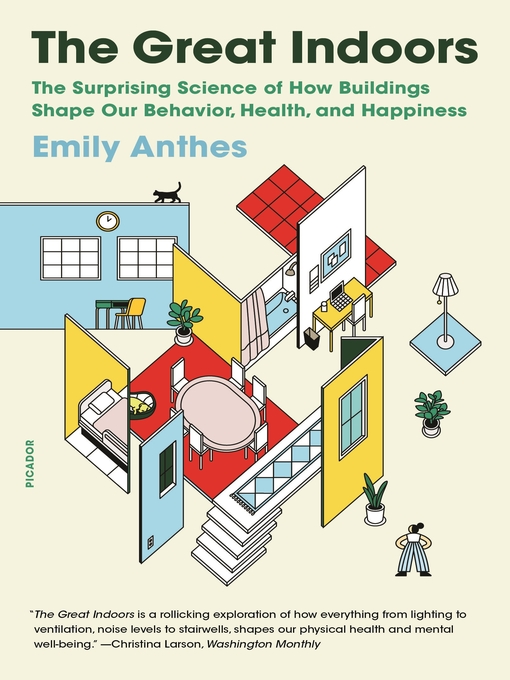An Architectural Record Notable Book
A fascinating, thought-provoking journey into our built environment
Modern humans are an indoor species. We spend 90 percent of our time inside, shuttling between homes and offices, schools and stores, restaurants and gyms. And yet, in many ways, the indoor world remains unexplored territory. For all the time we spend inside buildings, we rarely stop to consider: How do these spaces affect our mental and physical well-being? Our thoughts, feelings, and behaviors? Our productivity, performance, and relationships?
In this wide-ranging, character-driven book, science journalist Emily Anthes takes us on an adventure into the buildings in which we spend our days, exploring the profound, and sometimes unexpected, ways that they shape our lives. Drawing on cutting-edge research, she probes the pain-killing power of a well-placed window and examines how the right office layout can expand our social networks. She investigates how room temperature regulates our cognitive performance, how the microbes hiding in our homes influence our immune systems, and how cafeteria design affects what—and how much—we eat.
Along the way, Anthes takes readers into an operating room designed to minimize medical errors, a school designed to boost students' physical fitness, and a prison designed to support inmates' psychological needs. And she previews the homes of the future, from the high-tech houses that could monitor our health to the 3D-printed structures that might allow us to live on the Moon.
The Great Indoors provides a fresh perspective on our most familiar surroundings and a new understanding of the power of architecture and design. It's an argument for thoughtful interventions into the built environment and a story about how to build a better world—one room at a time.
- Available now
- Book Sanctuary Collection
- New eBook additions
- New kids additions
- New teen additions
- Most popular
- Try something different
- eBooks - Always Available
- Always Available Spooky Stories
- See all ebooks collections
- Available now
- Book Sanctuary Collection
- New audiobook additions
- New kids additions
- New teen additions
- Most Popular eAudiobooks
- Try something different
- eAudio - Book Club Ideas
- Book Club Picks -- 100 Checkouts!
- So Many Copies!
- See all audiobooks collections
- Most Popular Magazines
- Home & Garden
- Travel & Outdoor
- Magazines de langue française
- Newly Added Magazines
- Food & Wine
- Celebrity
- Health & Fitness
- See all magazines collections


